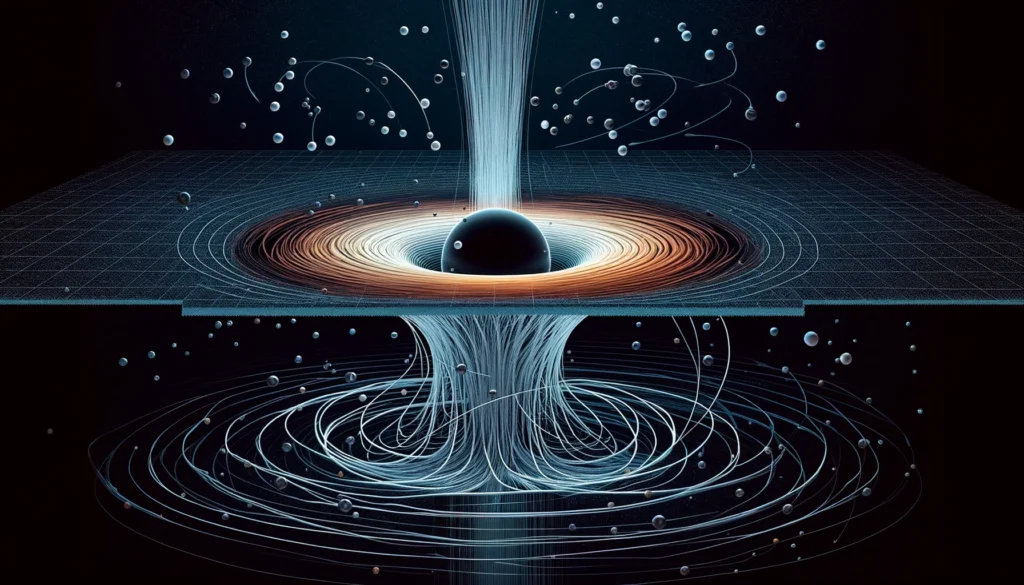Imagine peering into the cosmos and discovering new secrets about the universe’s most mysterious objects – black holes. Recently, an international team of researchers led by Oxford University Physics has done just that, confirming a key prediction made by Einstein nearly a century ago. Using X-ray data, they’ve provided the first observational proof of a “plunging region” around black holes, where matter stops circling and falls straight in. These groundbreaking findings, published on May 17th, 2024, in the Monthly Notices of the Astronomical Society, have us all on the edge of our seats, eagerly awaiting more revelations from the depths of space.
Understanding Black Holes and Einstein’s Theory
Black holes, the enigmatic giants of the universe, have always captured our imagination. These regions of space where gravity is so strong that nothing, not even light, can escape, are the ultimate cosmic mystery. Einstein’s theory of gravity, known as General Relativity, revolutionized our understanding of these celestial objects. Unlike Newton’s theory, which suggests a more predictable path for objects in space, Einstein proposed that close to a black hole, particles can’t maintain circular orbits. Instead, they plunge inward at nearly the speed of light. This “plunging region” has been a crucial yet elusive part of his theory – until now.

The Groundbreaking Study by Oxford University Physics
Led by the brilliant minds at Oxford University Physics, this study is a monumental achievement in astrophysics. The team, driven by a desire to unlock the mysteries of black holes, turned to NASA’s space-based telescopes – the Nuclear Spectroscopic Telescope Array (NuSTAR) and the Neutron Star Interior Composition Explorer (NICER). By analyzing X-ray data from these powerful instruments, the researchers aimed to put Einstein’s theory to the test. Their focus was on smaller black holes relatively close to Earth, providing a unique opportunity to observe these cosmic phenomena in unprecedented detail.
Discovering the Plunging Region
For the first time, scientists have provided observational proof of the plunging region around black holes. This area, where matter ceases to orbit and instead plunges directly into the black hole, is a place of extreme gravitational forces. Dr. Andrew Mummery from Oxford University Physics, who led the study, described this phenomenon using a vivid analogy: “Think of it like a river turning into a waterfall – hitherto, we have been looking at the river. This is our first sight of the waterfall.” This discovery is like witnessing the final moments of a particle’s journey into the black hole, offering a glimpse into one of the most powerful gravitational fields in our galaxy.

Implications of the Findings
The implications of these findings are profound. By studying the plunging region, scientists can now investigate the strongest gravitational forces known to exist. This research opens up new techniques for examining black holes, providing a deeper understanding of these enigmatic objects. The confirmation of Einstein’s prediction not only solidifies his theory but also paves the way for future discoveries that could reshape our understanding of the universe. The ability to observe and study these powerful forces can lead to breakthroughs in both theoretical and observational astrophysics.
Future Prospects and Ongoing Research
The excitement doesn’t end here. A second team from Oxford University Physics is part of a European initiative to build the Africa Millimetre Telescope, a new instrument that promises to revolutionize our observations of black holes. This telescope will enable scientists to record videos of larger, more distant black holes, potentially capturing the first images of these cosmic giants rotating. With over 10 million Euros in funding, this project will also support the first PhDs in astrophysics at the University of Namibia, fostering international collaboration and expanding our understanding of the universe.

Conclusion
The confirmation of the plunging region around black holes marks a significant milestone in astrophysics, affirming a key prediction of Einstein’s theory. This discovery not only enhances our understanding of black holes but also highlights the importance of continued research in this field. As we look to the future, the potential for new revelations about the cosmos is limitless. The study published on May 17th, 2024, is just the beginning, and we eagerly await the next chapter in our exploration of the universe.
Author’s Note
Thank you for reading! As a passionate follower of astrophysics, I’m thrilled to share these groundbreaking discoveries with you. Let’s continue exploring the mysteries of our universe together.
G.C., Ecosociosphere contributor.
References and Further Reading




